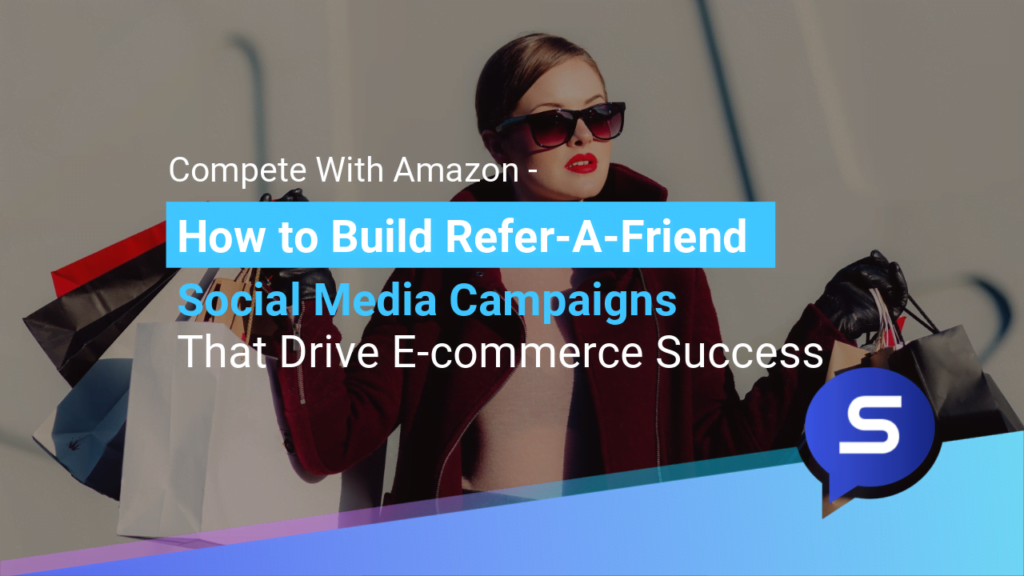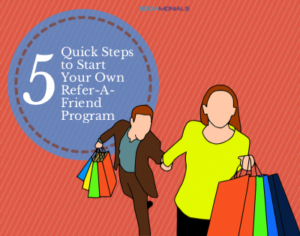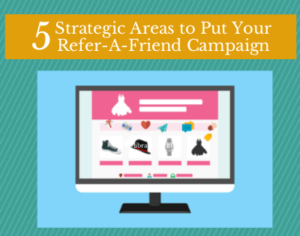

The e-commerce market continues to grow and is foreseen to account for the 15.1% of the overall retail industry worldwide in 2019, says eMarketer. Building a relationship with your customers has never been more important than today, as their role in growing online businesses takes lead. Customer[3] loyalty and engagement are two critical values that add up to position your brand to the next level of success. Through interactive social media campaigns that are directed to specific business goals, your e-commerce business can easily reach the top.
Referral programs allow e-commerce shops to leverage loyal customers who are naturally fond of their products and are fearless when it comes to sharing it with everyone. Your online shopping store may already have a persona in mind; your ideal customer who will advocate your brand in a flawless way that mimics a friendly relationship. But do you know that you can make your referral programs even more targeted by using actual data and real-time activity collected from your social media marketing campaigns so that it gives you detailed information on who’s actually sharing. These insights become even more powerful when you execute referral systems like “Refer-A-Friend” program where your happy customers are provided with a unique link to share via social media or email[4] and are automatically rewarded once their friends take action.
Studies show that referred customers have 16% more lifetime value than those of non-referred. It’s worthwhile that you take time to learn how to build an effective refer-a-friend referral program and run it. Using automated platforms to create and manage them gives you the ability to reach potential customers through preferred methods of your referrers, otherwise known as your brand ambassadors. By giving them unique shareable links, they’re free to choose however they want to send it to their peers. Whether it’s via text messages, instant messaging[1], social media shares or email messages, your brand ambassadors go to work effortlessly. They are helping you build your business.
To equip your loyal customers in their refer-a-friend mission for your e-commerce business, you need to establish a robust refer-a-friend campaign. Contrary to myths, it’s not really difficult and time consuming to build one. That is, if you know what you’re doing and whether you’re using the right tools. Let us guide you to the right path.
Here are five quick steps that you can implement to start your own Refer-A-Friend program.

Your customers’ friends are so valuable in bringing social shares. What they can do for your online business extends far more than their friend’s purchase. Think of generating new customers, improving search engine rankings and a no-cost brand exposure to a targeted audience. It just pays off! And so, be generous in rewarding them with the right offers.
You need to create a gratifying experience for your customers. Successful refer-a-friend programs provide incentives that match not only the audience and products of a particular e-commerce business, but also the level of engagement or the amount of new sales that came out as a result of the referral. In short, your rewards need to match the market you’re in, what your customer preferences are and an amount that is attractive enough to encourage action. In one survey from Harris Poll, it was found out that 88% of Americans prefer incentives in the form of money, product or service, or loyalty points, whenever they are asked to share products through social media or emails.
Your customer engagement[2] will also increase if their referrals are resulting in rewards for them. Make sure to equip your customers with your best first time offers to share. To find out what these are, take a look in your previous emails and campaigns. Check which ones brought the most number of new customers, and repurpose similar efforts.
One smart and inexpensive way to come up with rules for your Refer-A-Friend campaign, is to model it after the big brands that are already doing it. Use their rules as your guidelines in writing one for your program. When you’re happy with it, make sure to ask for a review from your business lawyer. If you’re on a budget, know that there are also prepaid legal services that initially charge around $25 a month. They review up to 10+ pages of documents for free, which is more than you need.
When you’re done with the legal side of your program rules, next is to communicate the program to your customers. This is achieved by creating a particular page in your website, where you’re going to send your customers so that they can sign-up as referrers, agree to the rules and get their own unique links.
Make sure that your ambassadors understand your referral program. Make it as simple as possible. If you think you can achieve this by explaining through a short video, go ahead. Tell them the story of how the program works, how they’ll be rewarded and what are the rewards to expect. And finally encourage them to take action. Each of your brand ambassadors is indispensable to your whole referral program. Providing them with an automated system that updates them on their progress will boost their motivation to act. Also, know that clarity and simplicity will also get them moving.
A number of software providers can help you work on the technical side of creating a refer-a-friend program. In a matter of minutes, your microsite could be up and running, including setting up of the system so that you’re able to track all your referrals. You can also design it with the look and feel of your brand.
Now is the time to finally implement your refer-a-friend program. Talk to your subscribers about it. Put it up in strategic places on your website. Mention it in your marketing campaigns. Create great social media campaigns that announce your rewards program. Make everybody in your community aware of your program.
These five steps will help you build an effective Refer-A-Friend system for your e-commerce business, so you can compete with the big brands, such as Amazon. Remember that your social media marketing efforts will work more efficiently if you deploy your refer-a-friend campaign at the right places on your website, social media channels and marketing avenues.
Specifically, here are five strategic areas to put your Refer-A-Friend campaign to make it work successfully for your online shopping store:

After a valid purchase from a customer, a confirmation page typically appears after a few seconds. Allow then a small window to pop up, where the customer is given a unique tracked link for sharing.
A few days after the customer’s purchase, make sure to send them follow-up emails. Add a link to the microsite in these email messages. When your customer receives his ordered item, he’d be ready to share with his friends his experience with your e-commerce site. If he already shared at the time of purchase, the microsite should prompt for additional shares. This can be easily set-up through marketing automation software.
You can add a banner on your home page to direct visitors to your refer-a-friend microsite. You need to closely monitor this to ensure valid sharing and avoid fraudulent activities such as prospects sharing with themselves to get rewards, and doing it repetitively. Using a referral software will automatically block such activity.
Social shares come naturally to the Facebook community. Encourage your followers on Facebook to sign-up on your microsite and share. First, you have to make it available there. On your Facebook page, make sure to create a tab for your microsite.
Use your social media feeds to post a link to your refer-a-friend microsite. Give your social media followers the opportunity to earn rewards for evangelizing your brand.
Creating great products or delivering an excellent service are sure ways to produce satisfied customers. Add it with an amazing user experience in your website or online store, and it’s guaranteed that you’ll have repeat orders. When you’ve done this, you’ve also convinced your buyers, indirectly, to recommend your brand. We all know that satisfied customers are willing to refer a business to their contacts. If you prioritize customer satisfaction and your customers see your sincere efforts to help and serve them, you also win their trust and endorsement.
When you use social media for referrals of your e-commerce store and products, not only will your reach expand to your customers’ friends, but also to all of their online circle of influence. Imagine doing this continuously with your new customers, your reach expands to the whole global community. And it’s quick and simple to set-up a refer-a-friend referral program, with a social media management platform like Sociamonials. There’s a template that will guide you and, allow you to customize according to the design and content that you like. In a few clicks, your refer-a-friend program will be up and running.

Learn more about refer-a-friend referral marketing program and six more ideas that will help you increase your customer base for your e-commerce business. Complement your referral marketing with the best social media campaigns, and see your e-commerce site rise to the top. This step-by-step information is available to you at zero cost when you download our white paper.
